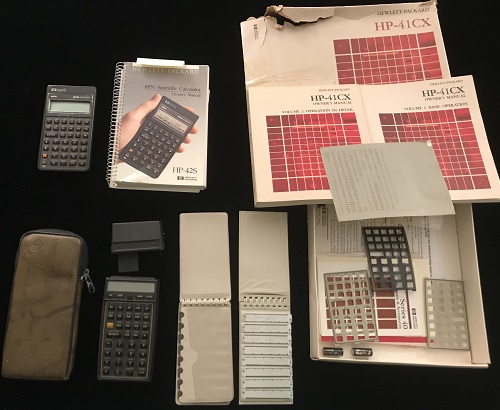Some time around 2004, as I was bouncing around the country doing data collections and research in support of the simulation and analysis of transportation and security systems, I happened to visit the National Museum of Nuclear Science & History in the Old Town section of Albuquerque, New Mexico. The exhibit that most struck me on that occasion involved a collection of manual devices that scientists and engineers in the early days of atomic research (including on the Manhattan Project) used to perform various calculations. Having some appreciation for the histories of science, mathematics, engineering, and computing, I am always impressed at how clever the early investigators could be. They were, after all, every bit as smart as we are. It’s just that they hadn’t learned as much and didn’t have access to the tools we do.
When I revisited the area on a major road trip last October, it took me a little while to figure out that the shiny new museum was the original one in a new and much expanded location.

I naturally scoured the place to find the exhibit I had so clearly remembered, so I could write about it here, but alas to no avail. Fortunately, I decided to bug the docents and those extremely helpful individuals introduced me to the museum’s head curator, who was kind enough to listen to my story and take me back to a meeting room where she let me look through a box of items she’d pulled from non-display storage.
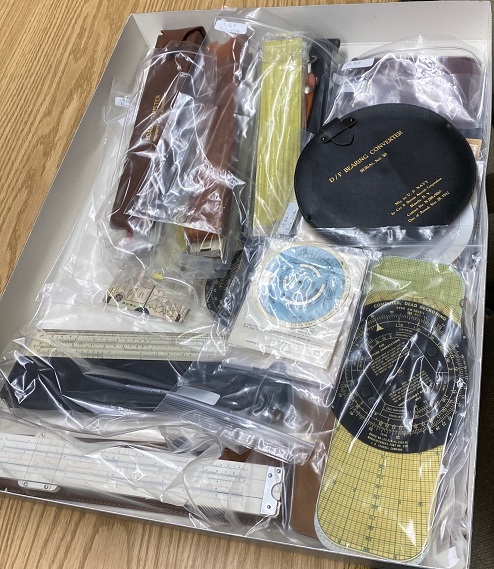
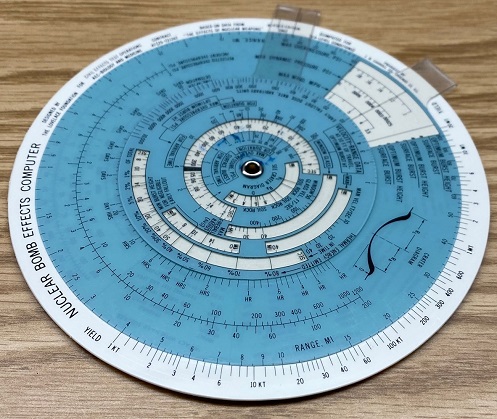
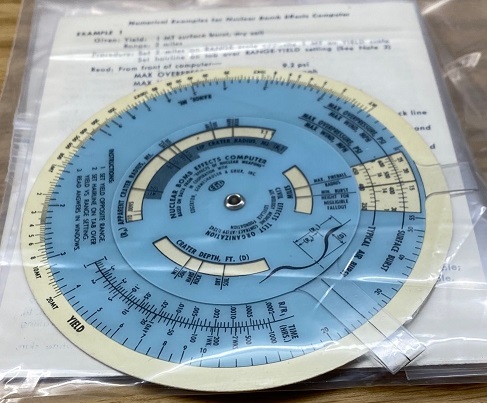
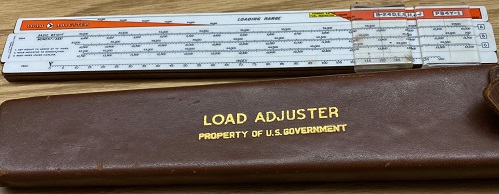
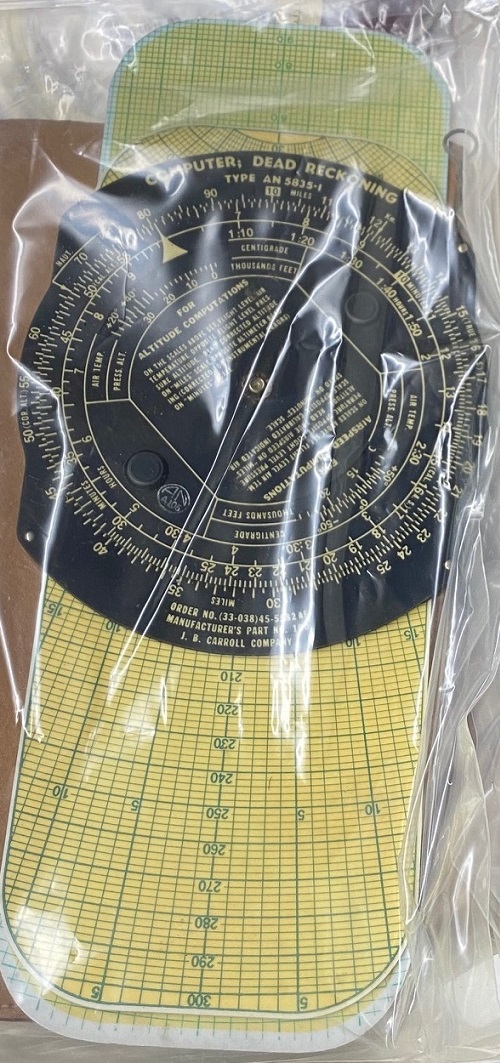
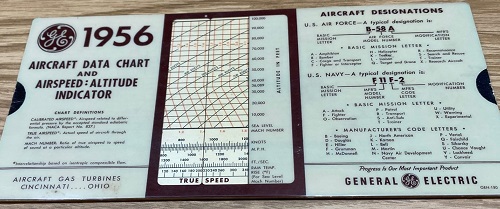
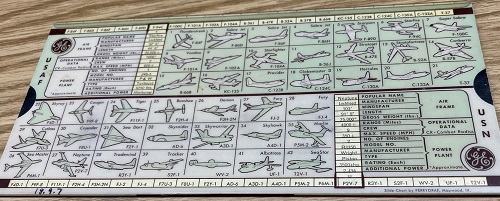
Those reference aids were all fascinating, I told her, but they weren’t what I was looking for. What I was looking for were a series of paper calculators like this one from a game I used to play with my mother’s parents (the version described in the link is an update from the one I played with my grandparents, and which I think is superior), as shown below. A close-up of the paper calculator is shown separately. It is essentially just a glorified lookup table of multiplied values of number of shares (1-50 are shown on the other side) and the price per share. The game included two hundred shares of each company, but the makers figured people could multiply by a hundred and add when necessary.
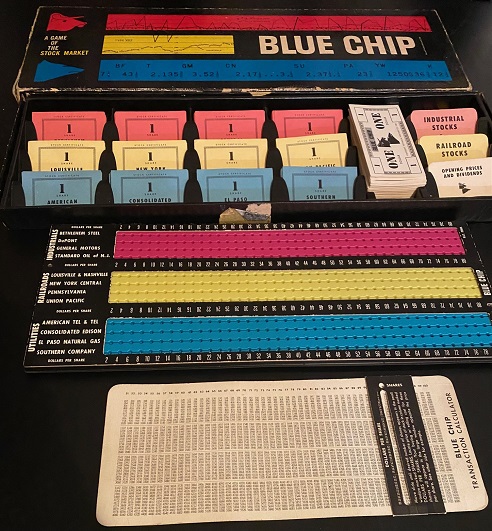
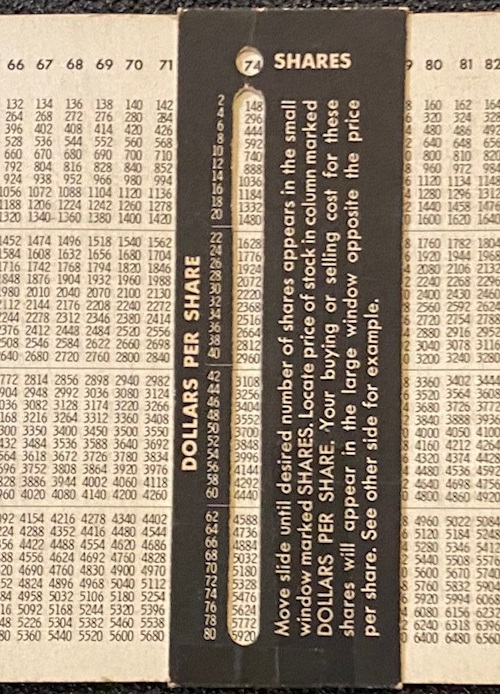
Then the curator related that the items she had available were only part of a much larger collection that a donor had loaned to the museum for display, but he had chosen to reclaim many of the items when the museum moved.
Oh well.
Let’s see what we can dredge up, anyway.
I have a few random things I’ve collected over the years. The middle slide rule was my father’s. He used it to get his master’s in finance (and his CFA certification) in the mid-60s. I remember him showing me how to multiply on it, with the example 9 * 9 = 81. The center sliding section can be flipped over and provides several more scales. Back in the day I could tell at a glance what all the scales were used for. Now I’d probably have to think about some of them for a while… The smaller, two-cycle rule at the bottom and the circular one at the top are items I happened upon at random.
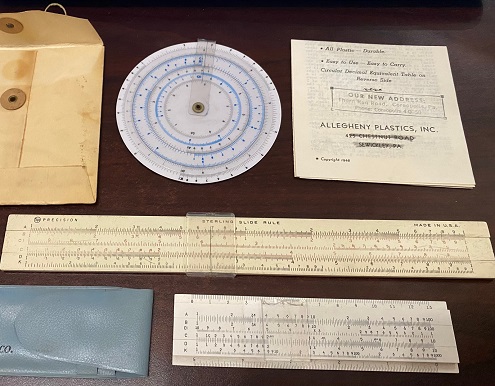
This Kodak reference has a bunch of pages with tables and rotating wheels that helped you figure out various camera settings. I never spent enough time using it, but it seemed like the kind of thing an intrepid photographic hobbyist (and inveterate gearhead in all things) ought to have in support of his Minolta X-700.
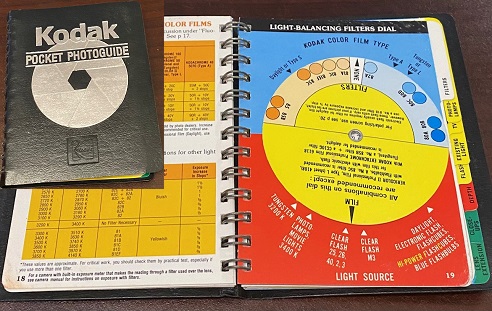
Greasy nerds (and I say that with all love and respect!) old enough to have enjoyed the heyday of classic first edition Advanced Dungeons & Dragons may remember this legendary combat calculator that was published in Dragon Magazine issue number 74. The idea was that you cut out the cardstock images, excised the viewing windows and the center hole, and stuck the layers together with a brass fastener. I think I laminated mine. Then I got really clever and made my own wheels on the back side, which showed die rolls needed to make saving throws based on character class and level, and the results of cleric characters’ attempts to repel (turn) undead monsters. Sure, all this stuff could easily be looked up in a book or a dungeon master’s screen, but this was more fun. (Never mind that I basically never used it…)
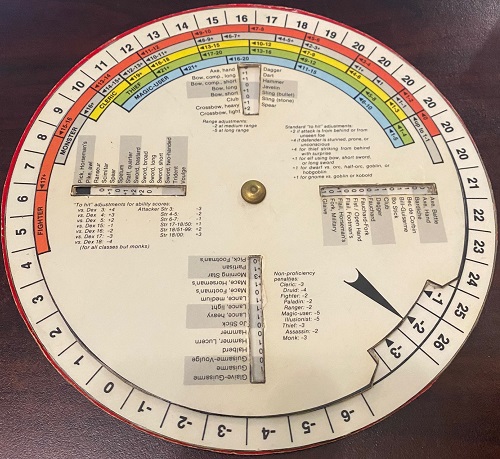
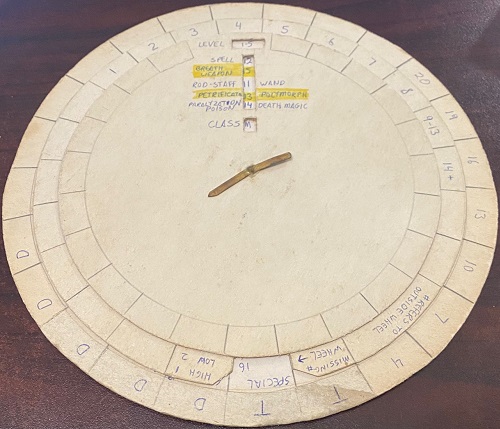
Here I’m cheating a little. (OK, a LOT!) I had a bunch of handheld calculators over the years. (I should probably do a separate post on those.) The last one I used in college was the HP-41CX, complete with card reader. My NCO school instructors at Fort Bliss had no idea what to do with me when I used it to write a program to do intersection and resection in our map reading class. The smaller-and-not-expandable HP-42S was the most powerful programmable calculator Hewlett-Packard ever released. Devices like this have since been overtaken by the power and ubiquity of computers and mobile apps. That said, because I would find it intolerable to not use Reverse Polish Notation when doing quick calculations, I have an HP-42S simulator on my iPhone, and an HP-15C simulator on my laptop.
Since we’re talking about doing things by hand, however, on with the show.
I visited the Greenwich Observatory in 1987, but after a pretty full day of knocking around London with some colleagues, I arrived just after closing, and wasn’t able to see what was inside. I managed to remedy that in 2014 (with my little stuffed mascots, in front of the main building and in front of the Prime Meridian which divides the eastern and western hemispheres). Better 27 years later than never, right? The third image shows an instrument used to measure the angle of different objects in the night sky to a very precise degree — for a mechanical device. The fourth is just a modern update (c. 1897). I didn’t get pictures of everything there, but the instruments ware all interesting, and the older the better. They reminded me of a technique I learned in Mr. Thompson’s astronomy class in high school, which allowed you to accurately plot a planet’s orbit around the sun using just two observations at different positions and times. Decades and centuries of diligent observation, measurement, and analysis slowly unlocked important parts of the workings of the universe.
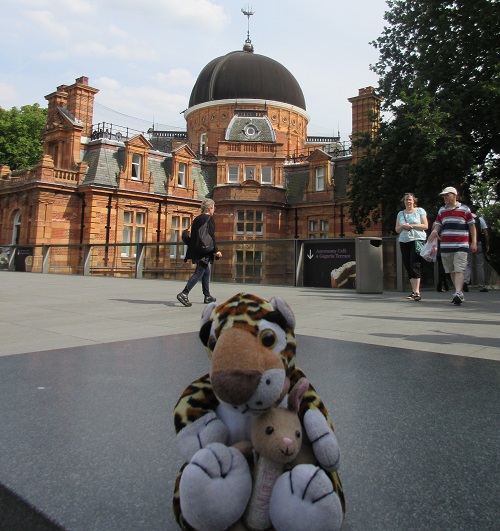
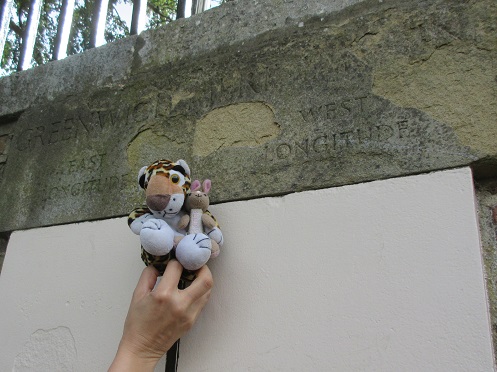
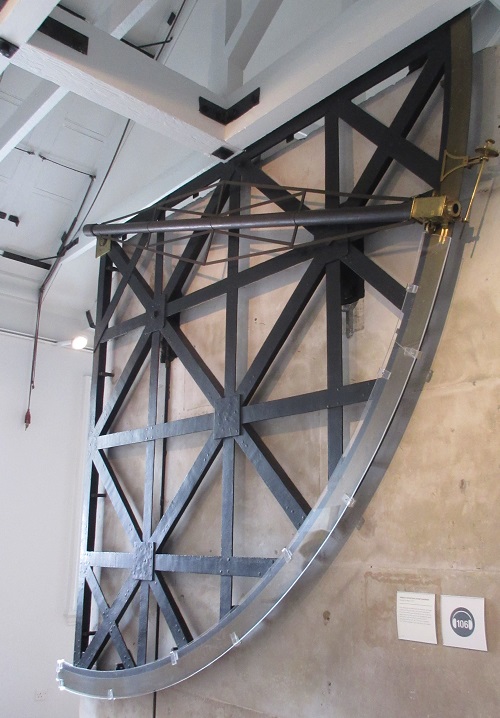
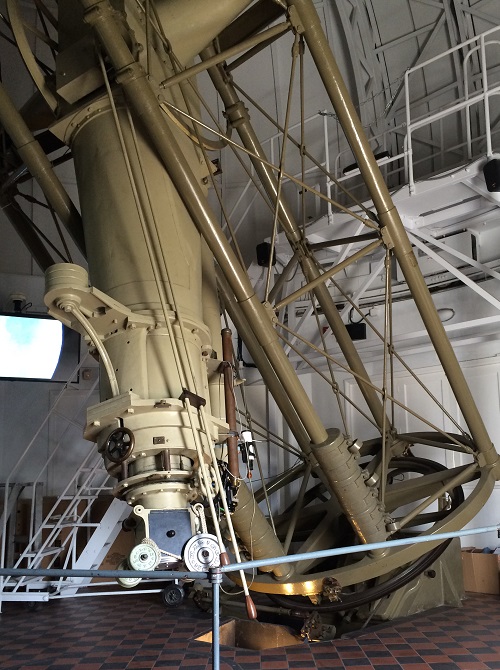
If you observe that those instruments were unlike the manual calculation aids I discussed above, I won’t argue, although I’m guessing that many tables of objects and their movements were compiled at Greenwich and elsewhere. One wonders how the Mayans did it, or the Egyptians, or anyone who came before (like at Göbekli Tepe).
I finally poked around the internet and stumbled across a few websites discussing several major collections of the sort of calculation devices I set out to discuss. I neglected to ask the name of the collector whose items I had seen at the original nuclear museum in Old Town Albuquerque, so I can’t verify that any of the devices described in any of the following links are the same ones I saw, but at the least you might appreciate the wide variety of devices that have been created over the years for almost any application imaginable.
Here is a nice, general article about slide rules.
The site for the Oughtred Society (named after the inventor of the slide rule, William Oughtred) links to a ton of resources on the subject.
This subpage of the above links to several prominent collections of devices. Those collections feature literally hundreds of devices.
This item is constructed not as a classic slide rule but as a sliding, paper lookup device of the type I most remembered seeing at the museum. Other examples are here, here, here, here, and here, but there are many circular ones dedicated to looking up values related to fission and radioactivity effects, as exemplified here, here, and here. As you can see, some of these are nothing but glorified lookup tables, but others can be used to calculate various quantities. As always, you should only plug numbers into the actual calculation when you have already solved the problem logically and understand what all the components mean.

